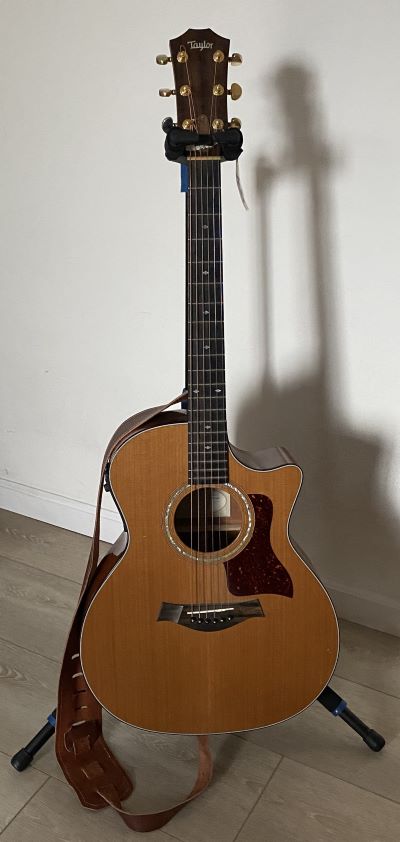| Home |
|
 |
||
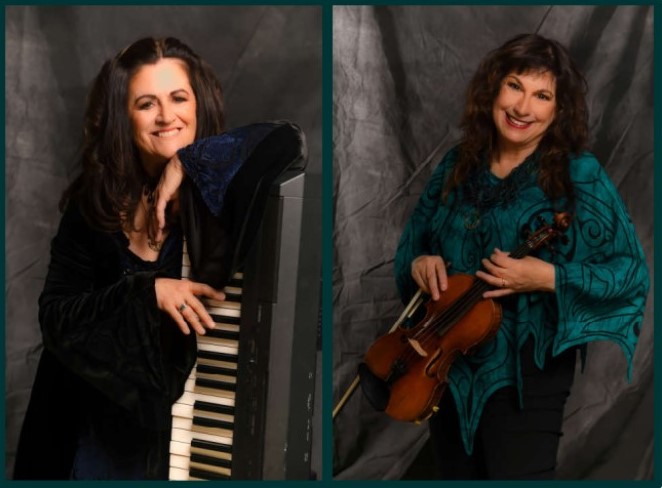 |
Learn about the instruments we play!
Lynda's Instruments Verlene's Instruments |
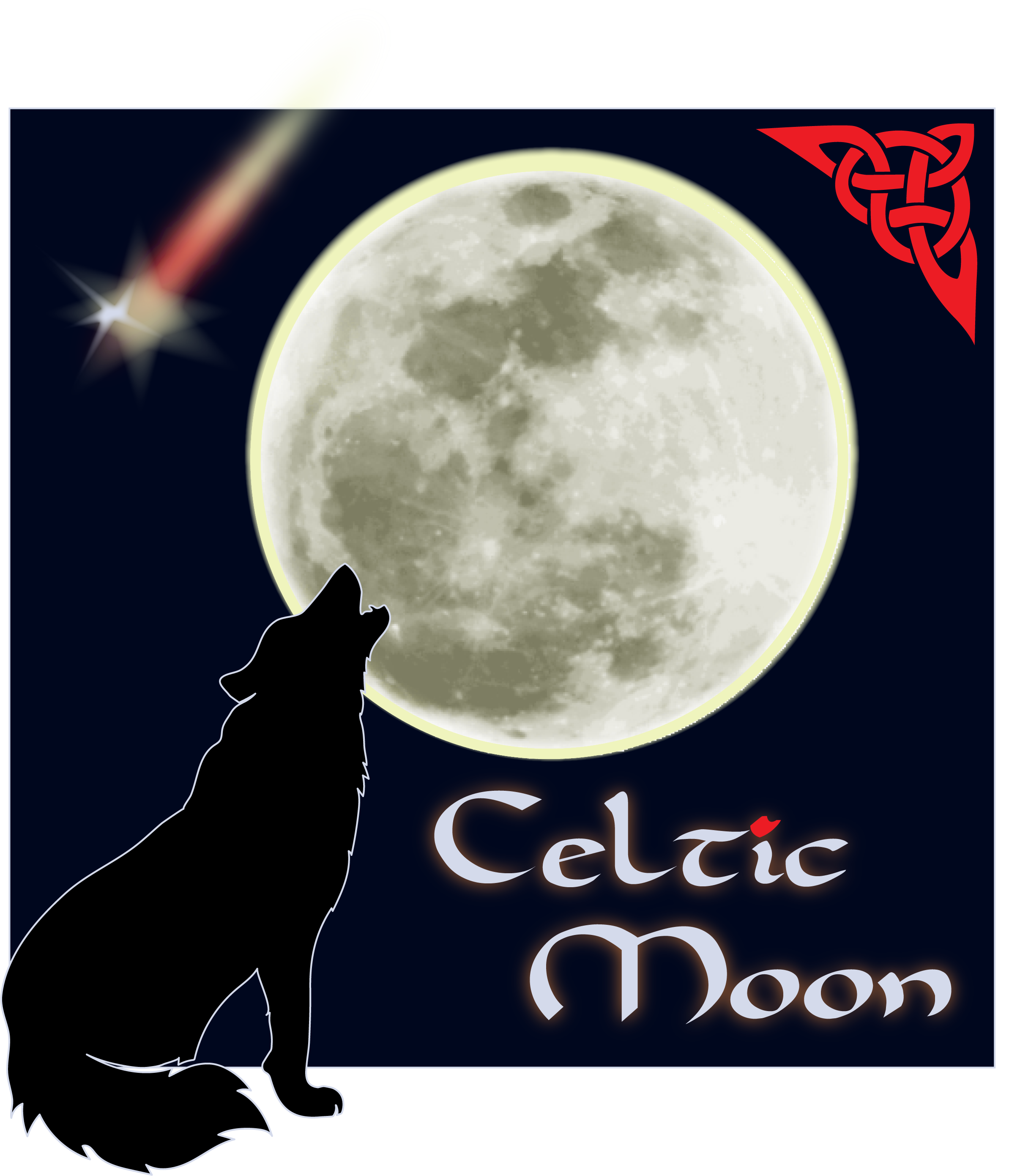 |
|
Roland
FP-90X Digital Piano
I
chose this particular keyboard model because it
feels the closest to playing an acoustic piano. With
other digital keyboards, there is a dullness in the
tone that this Roland model transcends. The touch is
as exciting as playing my Yamaha Baby Grand.
I
am very happy while playing on this keyboard! It has
tremendous capabilities for live performance,
including combining sounds, splitting the keyboard
into different sounds, an equalizer, ambiance
choices, including a wood room, and memory for each
sound design I create for our diverse repertoire.
The built-in speakers are very powerful and enable
me to not need to plug into an amplifier for
rehearsals and small house performances.
|
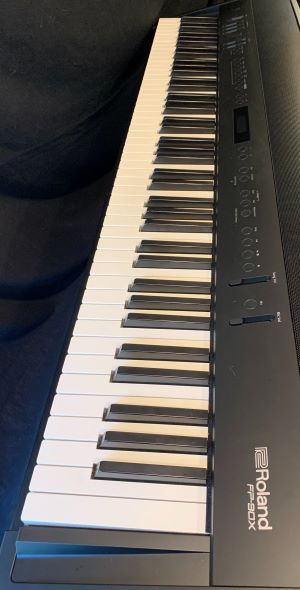 |
 |
Celtic
II 34 String Harp
The
Celtic II 34 String Harp is not only rich in tone,
but also a work of art visually with her Celtic knot
engravings, moonstones, abalone inlays, walnut and
bubinga wood. She weighs 25 pounds, has an
integrated pickup, a range of C2 - A7, and is 52
inches high.
She was made in Southern California by Triplett Harp Makers. Between Verlene and me, we have lovingly owned about 8 Triplett Harps. I am calling her Luna for now, but I think there is another name that will emerge as she becomes more comfortable with being a harp. She was lovingly born in February of 2023. |
|
Taylor Model 514ce
LTD Grand Auditorium Acoustic-Electric Guitar
Rich and sparkly! That
is how I describe the sound of this beautiful
guitar. We are pleased and impressed with the tone
and responsiveness! Whether strumming,
finger-picking, or using it as a drum, it adds
brightness and power to our music-making.
|
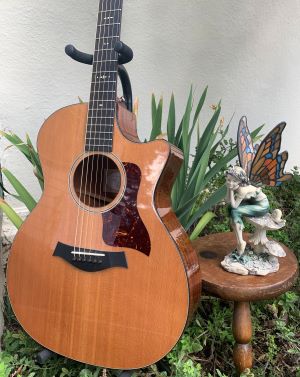 |
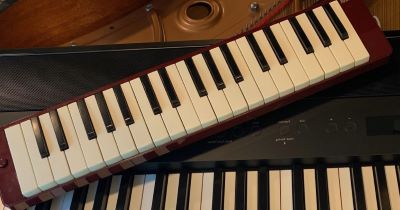 |
Yamaha
37-Key Melodica
The
melodica is a handheld free-reed instrument similar
to a pump organ or harmonica. It features a musical
keyboard on top and is played by blowing air through
a mouthpiece that fits into a hole in the side of
the instrument. The keyboard usually covers three
octaves.
Instrument
family: Wind instrument, Woodwind instrument,
Aerophone, Free reed Aerophone
Place
of origin: Italy
Invented:
1950s
Inventor:
Hohner
Related
instruments: Harmonica, Accordion, Reed Organ, Yu
The
melodica was first used as a serious musical
instrument in the 1960s by composers such as Steve
Reich in his piece titled Melodica (1966). Brazilian
multi-instrumentalist Hermeto Pascoal developed a
technique consisting of singing while playing the
melodica, resulting in a wide tonal and harmonic
palette.
|
|
Violin/Fiddle
What's the difference
between a fiddle and a violin? I'm asked that a
lot! Well, mainly it's the music played on the
instrument, and the technique and bowing patterns.
There are some who set up a violin as a "fiddle'
by using a slightly flatter bridge, enabling them
to play two strings at once more easily, but for
the most part, you can use any violin to play
traditional music.
My
violin is a baroque model by Sebastian Klotz, and
has a higher arch than a modern fiddle, producing
a sweet, rich tone. I most often use a wood bow by
Giuseppe Vitale, although in extreme weather, I
use a carbon fiber bow by Coda (pictured here.)
I use a wireless pickup system by KNA that allows me to move away from the stage when I feel inspired! |
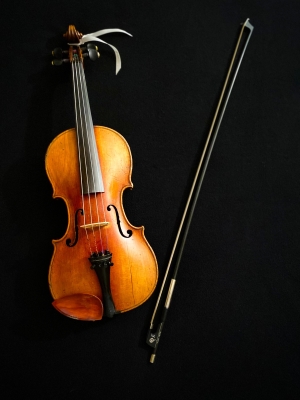 |
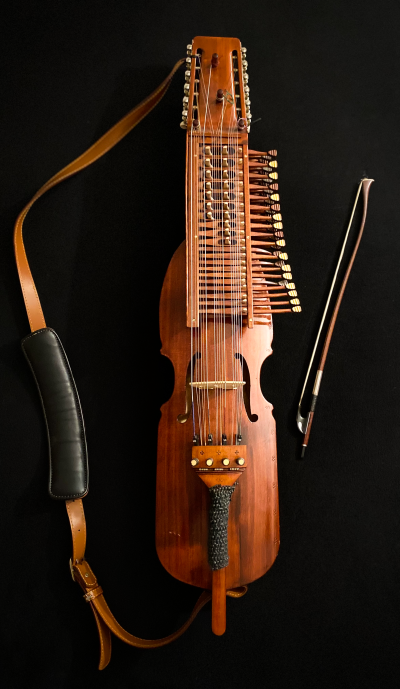 |
Swedish
Nyckelharpa
Nyckel
is the Swedish word for "key," and harpa is
a word used for any stringed instrument before
violins were used in Sweden. Like the hurdy-gurdy,
the instrument has keys, but instead of being played
with a wheel and a crank, the nyckelharpa is played
with a bow like a violin or fiddle. So, a
nyckelharpa is a "keyed fiddle."
The
nyckelharpa has several keys that are pushed in
individually, moving a wooden dowel called a
"tangent" to shorten the length of the string,
producing a higher pitch. Each key on the modern
nyckelharpa increases the pitch by one half step,
making it a fully chromatic instrument. There are
four bowed stings, with keys on the highest three.
From
the highest to the lowest, the strings are tuned to
A (440), middle C, G and the octave below middle C.
This low C is used as a drone or the bottom note in
a chord. In addition to the four bowed strings,
there are 12 chromatic strings that are set lower in
the bridge so that the bow can't reach them. These
are "resonant" strings that vibrate sympathetically
with each pitch.
The
nyckelharpa dates back to the 14th century, with a
stone carving of one on the gates of Källunge church
on Gotland, which is an island off the coast of
Sweden. The earlier nyckelharpa was not fully
chromatic and had fewer strings. The modern
nyckelharpa was developed by August Bohlin in the
early 1900s with improvements made by Eric
Sahlström.
My
nyckelharpa was made in Sweden by luthier, Martin
Westermark.
|
|
Mandolin
A
mandolin is like a fretted violin that you pluck and
strum instead of bow. The strings are tuned in
fifths, the same as a violin, and they are doubled,
so you have two Es, two As, two Ds, and two Gs.
A
characteristic sound is the tremolo which is a rapid
back and forth strumming pattern on individual
strings or on multiple strings.
My
mandolin is a Gibson hybrid from 1939. It was likely
made during a transition between models. It has a
hole in the middle like a guitar rather than the F
holes like those on a violin.
|
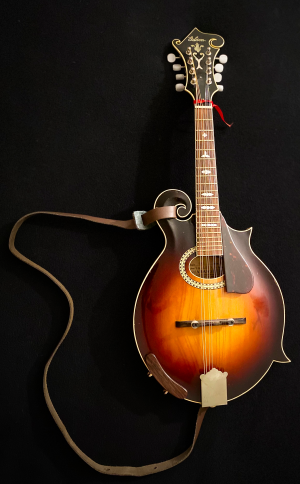 |
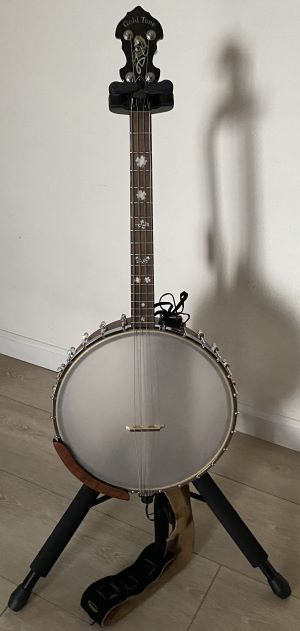 |
Irish
Tenor Banjo
The
tenor banjo has 4 strings, unlike the bluegrass
banjo which has 5 strings. There are several ways to
tune a tenor banjo, with the most common being tuned
like a viola. Some people will tune the four strings
like the top four strings of a guitar.
The
Irish tenor banjo is tuned an octave below the
violin, with the strings from high to low: E (just
above middle C) A D G
My
Irish tenor banjo is a Gold Tone by Deering.
|
|
Celtic Harp
The
Celtic Harp has levers that change the pitch of
each string by one
half step. This is in contrast with the Orchestral
Harp, a.k.a. Pedal Harp, which uses pedals to
change the pitch of each string up or down one
half step. Celtic harps come in all sizes, from a
small harp that can be held in the lap to a large
harp (still smaller than the pedal harp) that sits
on the floor. The smaller the harp, the smaller
the range of notes. The lowest note on most floor
harps is the C two octaves below middle C. The
range is usually around 5 octaves.
My
harp has 34 strings, and is two notes shy of 5
octaves. It is the original Celtic model by Triplett
Harps with a Dusty Strings pick-up system installed.
The Celtic model has been redesigned, so new ones
are called the Celtic II, which is what Lynda plays!
The wood on my harp is walnut for the body with a
spruce soundboard.
|
 |
|
|
Acoustic-Electric
Guitar
Lynda
and I have the same guitar, although mine is an
older model. It is a Taylor 514CE acoustic electric
guitar with a cutaway. I use standard guitar tuning,
as does Lynda. We love our matching guitars and are
enjoying playing our two guitars together for some
tunes!
|
|
Concertina
A concertina is a small
button accordion that has a hexagon shape. For the
Anglo concertina, each button plays two different
notes, one on the "push" and one on the "pull." 20
key concertinas have two rows of 5 buttons on each
side, whereas 30 key concertinas have three rows
of 5 buttons per side.
The notes are arranged
so that the notes Do Mi So (the 1, 3, and 5 in the
major scale, which are also the three notes of the
tonic or "one" chord) are played when pushing but
the other notes in the scale are played when
pulling. For music theory geeks, that's the
dominant 9 chord!
The middle row plays
the notes in a C chord on the push and a G9 on the
pull. The inside row plays a G chord on the push
and a D9 on the pull. The outside row is
interesting -- it has a few duplicate notes from
the other two rows, but are on the pull instead of
push, or push instead of pull. The other buttons
are assigned to the other accidentals so that
playing in keys with more sharps or with Bb is
possible.
My concertina is a
Morse & Co. Céilí Anglo 30 key concertina.
|
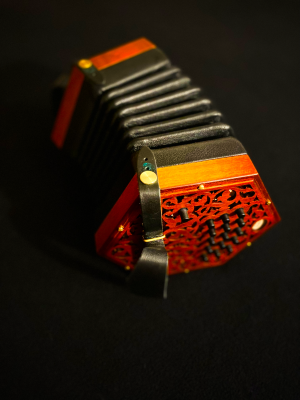 |
